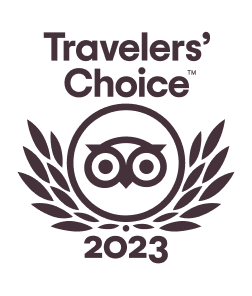
So you’ve finally made plans to visit Peru – it’ll be the trip of a lifetime. You’ll explore Machu Picchu, visit famous ruins, indulge in the amazing cuisine, maybe even get to experience the Amazon Jungle! The last thing you need is to be laid out with traveler’s diarrhea, the most common health issue encountered by visitors to Peru.
Here are some tips for how to avoid spending a large part of your Peru trip in the bathroom instead of on the trail.
1. Avoid the Tap Water
If you want to stay well during your Peru vacation, avoid drinking the tap water. Especially cautious travelers will even want to brush their teeth with water that’s been boiled. There are several options for safe drinking water while in Peru:
- You can boil tap water (at least five minutes, ten minutes if you are at high altitude) and let it cool.
- Add iodine or water purification tablets to tap water.
- Buy bottled water. This has the disadvantage of creating pollution from the plastic bottles; bringing your own refillable thermos is highly recommended.
2. Always Ask
When dining out, remember to ask whether raw veggies and fruits are being washed in purified water, and only eat them if the answer is yes. Also ask the same about ice. Additionally, it’s safer to peel fruits and veggies when eating them raw.
3. Follow the Crowds

If you’re a culinary adventurer, you won’t want to miss out on some of the wonderful varieties of street foods found in Peru. Of course, it is impossible to be totally sure that the food is safe, but here are a couple of questions to ask yourself when determining whether you want to eat at a particular stand:
- Does the vendor wash her hands?
- Do you observe the presence of soap and water?
- Does the vendor touch the straw for your drink or does she allow only you to handle it?
- Does she handle the food with plastic gloves or other protection? Is the stand crowded with lots of folks standing around eating? They probably know and trust the vendor.
- Is the vendor in the same place every day? She won’t want to risk making regular customers ill.
- Is the food hot and well cooked?
For the less adventurous, it is of course safest of all to eat only at restaurants that are recommended and cater to tourists. They will be well acquainted with standard international hygiene practices.
4. Know What To Do if Altitude Sickness Strikes
It’s normal to experience shortness of breath and heart pounding at heights above 3000 meters, but if you develop symptoms such as severe headache, nausea, extreme fatigue, and sleeplessness, you may have acute altitude sickness, or Soroche. Drinking coca tea can be helpful. Also, drink plenty of fluids and take it easy for a few days. If your symptoms don’t improve, you can go to a lower altitude and then come back up in stages. You can also buy Diamox over the counter at most pharmacies, which may help with some of the symptoms.
Take These Tips With You On Your Peru Vacation

No one wants to travel all the way to Peru to be holed up in a bathroom or in bed the entire trip. But it does happen. Follow these four pointers and you’ll be well on your way to enjoying a sick-free visit to Peru from start to finish.
At the beginning stages of planning your once-in-a-lifetime trip to Peru? Our knowledgeable Kuoda Travel Designers can help you every step of the way. Contact us today to get started.
8 Culinary Events and Experiences in Peru To Attend in 2024
Renowned globally for its distinctive fusion of indigenous ingredients with Spanish, African, Asian, and even ...
Read PostExploring Peruvian Wine: A Guide For Wine-Lovers Traveling to Peru
Peru is a land of many treasures, from its rich history and diverse landscapes to its culinary delights, inclu...
Read PostVegan and Vegetarian Dining in Peru: Delicious Options For Everyone
Avid travelers with a penchant for plant-based eating will be delighted to discover that vegan and vegetarian ...
Read Post

 Call
Call 























